Table of Contents
Come join us now, and enjoy playing your beloved music and browse through great scores of every level and styles!
Can’t find the songbook you’re looking for? Please, email us at: sheetmusiclibrarypdf@gmail.com We’d like to help you!
Sorabji: In the Hothouse (from Two Piano Pieces) sheet music, Noten, partitura, spartiti 楽譜

Best Sheet Music download from our Library.
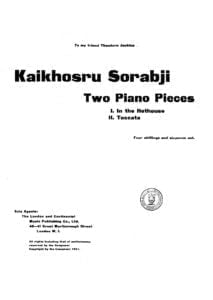
Please, subscribe to our Library.
If you are already a subscriber, please, check our NEW SCORES’ page every month for new sheet music. THANK YOU!
Browse in the Library:
Or browse in the categories menus & download the Library Catalog PDF:
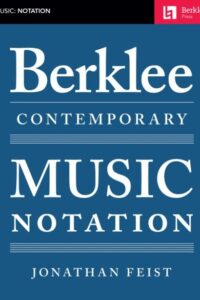
Who was Sorabji?
Kaikhosru Shapurji Sorabji: The Hermit of Modernist Maximalism
In the often-crowded pantheon of 20th-century composers, Kaikhosru Shapurji Sorabji (1892-1988) occupies a unique and enigmatic niche. A composer of staggering ambition, labyrinthine complexity, and self-imposed isolation, Sorabji crafted some of the most monumental, technically demanding, and stylistically idiosyncratic music ever conceived. His work, largely ignored during his lifetime and still challenging audiences today, represents a singular path through modernism – one defined by maximalism, intricate ornamentation, transcendental virtuosity, and a fierce, almost hermetic, independence.

Biography: A Self-Forged Identity
- Birth & Heritage: Born Leon Dudley Sorabji on August 14, 1892, in Chingford, Essex, England. His father was a Parsi engineer from India (thus the Persian-derived name Sorabji), and his mother was English-Spanish. This mixed heritage profoundly shaped his sense of identity, though he felt alienated from both cultures.
- The Name: Around 1914, he legally changed his name to Kaikhosru Shapurji Sorabji. “Kaikhosru” and “Shapurji” were Persian names chosen for their resonance and connection to ancient Persian history and Zoroastrianism, reflecting his deliberate construction of a unique persona.
- Musical Formation: Largely self-taught. He received some piano lessons in his youth but had no formal composition training. His musical education came through voracious listening, score study (especially Bach, Liszt, Busoni, Debussy, Ravel, Scriabin, Szymanowski, Medtner), and wide reading in literature, philosophy, and the occult.
- Early Career & Criticism: Worked as a music critic (under the pseudonym “S. Godfrey”) for outlets like The New Age and The New English Weekly from the 1910s to the 1930s. His critiques were famously acerbic, insightful, and often scathing, particularly targeting English musical provincialism and composers he deemed mediocre (which was most of them).
- The Recluse: Deeply disillusioned by the musical establishment and critical reception to his early performances (which were rare and often controversial), Sorabji gradually withdrew from public musical life starting in the late 1930s. After his mother’s death in 1940, he retreated almost completely to his secluded home “The Eye” in Corfe Castle, Dorset, where he lived with his companion, Reginald Norman Best, until his death. He forbade performances of his music for decades.
- The Ban Lifted: In 1976, pressured by a growing underground interest spearheaded by pianists like Yonty Solomon and Alistair Hinton (who later became his literary executor), Sorabji reluctantly lifted the ban on performances, provided he approved the performer.
- Death: Sorabji died on October 15, 1988, in Winfrith Newburgh, Dorset, leaving behind a colossal legacy of unpublished manuscripts.
Works: Monuments of Sound

Sorabji’s output is vast and overwhelmingly dominated by solo piano music, though he also composed orchestral works, chamber music, organ symphonies, and songs. His works are renowned for their extreme length, density, and technical difficulty, pushing the boundaries of playability.
- Key Masterpieces:
- Opus Clavicembalisticum (1930): His most famous (or infamous) work. A colossal 4+ hour piano epic in 12 movements (including fugues, passacaglias, toccatas, cadenzas), often considered one of the most challenging solo piano works ever written. A summit of contrapuntal complexity and virtuosic display.
- Symphonic Variations for Piano (1935-37): Another monumental work, exploring vast variation forms over an extended duration.
- Sequentia Cyclica super “Dies iræ” ex Missa pro Defunctis (1948-49): A massive cycle of 27 variations on the “Dies Irae” chant, demonstrating his intricate contrapuntal and transformative skills.
- 100 Transcendental Studies (1940-44): True to their name, these studies explore extreme technical and expressive demands far beyond those of Liszt or Chopin.
- Symphonies for Solo Piano: Several exist, including his Symphony No. 2 (“Jāmī”), blending orchestral textures and scope onto the piano.
- Gulistān – Nocturne for Piano (1940): A prime example of his lush, perfumed, and incredibly intricate “Persian”-inspired style.
- Concerti: He wrote several for solo piano and orchestra (e.g., Concerto per suonare da me solo e senza orchestra, per divertirsi), which are symphonic in scale and require superhuman virtuosity.
- Symphonies for Organ: Vast, complex works exploring the sonic possibilities of the instrument.
Analysis of Style: A Universe of Complexity
Sorabji’s style is instantly recognizable yet difficult to categorize. It synthesizes diverse elements into a unique and overwhelming whole:
- Maximalism: This is the defining characteristic. Sorabji embraced extremes:
- Length: Works lasting several hours are common.
- Density: Highly polyphonic textures, often with multiple independent melodic lines woven together in complex counterpoint (influenced by Bach, Busoni).
- Virtuosity: Demands transcendental technique – cascades of notes, complex polyrhythms, wide leaps, immense power, and extreme delicacy. He wrote as if the pianist had four hands.
- Ornamentation: Baroque-like ornamentation (trills, mordents, turns, grace notes) is ubiquitous, often layered and integral to the texture, creating shimmering, kaleidoscopic surfaces (influenced by Scriabin, Szymanowski, Middle Eastern/Persian music).
- Dynamic Range: From barely audible whispers to thunderous, percussive climaxes.
- Harmony: A complex fusion:
- Rooted in late-Romantic chromaticism (Scriabin, Szymanowski, early Schoenberg).
- Freely employed dissonance, clusters, and intricate chord structures.
- Often retained a sense of tonal centers or polarity, even amidst dense chromaticism (unlike strict atonality).
- Incorporated modal inflections, sometimes evoking Persian or Spanish flavors.
- Rhythm: Highly complex and fluid:
- Frequent use of polyrhythms (multiple simultaneous rhythms), cross-rhythms, and nested tuplets (triplets within quintuplets, etc.).
- Tempo often fluctuates wildly, requiring immense control.
- A sense of improvisatory freedom within highly structured forms.
- Form: Often large-scale, complex, and idiosyncratic:
- Favored variations (passacaglias, chaconnes), fugues, toccatas, and intricate multi-movement structures (like the Opus Clavicembalisticum).
- Forms were often expansive and cumulative, building through layered repetition and intensification rather than traditional development.
- Architecture was paramount, even in the densest textures.
- Influences (Assimilated, Not Imitated):
- Ferruccio Busoni: The most profound influence. Busoni’s ideas of “Young Classicism,” the transcendental potential of the piano, the fusion of Bachian counterpoint with modern harmony, and the concept of “Junge Klassizität” resonated deeply. Sorabji dedicated his Opus Clavicembalisticum to Busoni’s memory.
- Franz Liszt: Virtuosity, thematic transformation, large-scale forms, and the symphonic poem concept translated to piano.
- J.S. Bach: Contrapuntal mastery, structural rigor, and the use of forms like fugue and passacaglia.
- Alexander Scriabin: Mysticism, harmonic language, dense textures, and ecstatic climaxes.
- Karol Szymanowski: Sensuous harmony, intricate ornamentation (especially in the “Persian” inspired works like Métopes and Masques), and voluptuous textures.
- Debussy & Ravel: Color, texture, exoticism, and pianistic refinement.
- Mediterranean & Persian Cultures: While not authentically recreating these styles, he evoked their essence through ornamentation, melodic turns, and titles (Gulistān, Jāmī), reflecting his fascination with his Persian heritage and the wider Orient.
- Aesthetic: Sorabji’s music aimed for:
- Transcendence: Pushing beyond perceived limits of instrument, performer, and listener.
- Luxuriance & Opulence: A rich, sensual, almost decadent sound world.
- Intellectual Rigor: Underlying the sensual surface was meticulous structural planning.
- Individualism: A complete rejection of prevailing trends (serialism, neoclassicism, minimalism) in favor of his own uncompromising vision.
Legacy: From Obscurity to Cult Status
Sorabji’s legacy is complex and evolving:
- Decades of Neglect: His self-imposed exile and performance ban meant his music was virtually unknown outside a tiny circle for nearly 40 years. Manuscripts were inaccessible, unplayable, and unpublished.
- The Pioneers (1970s-): The lifting of the ban sparked interest. Pianists like Yonty Solomon, Michael Habermann, Geoffrey Douglas Madge (who made the first complete recording of Opus Clavicembalisticum in 1977), and later Marc-André Hamelin, Jonathan Powell, Fredrik Ullén, and Ronald Stevenson began the monumental task of learning, performing, and recording his works. This required immense dedication and technical prowess.
- Publication & Scholarship: The Sorabji Archive, established by Alistair Hinton (Sorabji’s literary executor), has been crucial in cataloging, editing, and facilitating the publication of scores (primarily by Dover Publications and The Sorabji Music Archive). Scholarly work is gradually increasing.
- Recordings Renaissance: The CD era and digital distribution (YouTube, streaming) have been transformative. Dedicated labels (Altarus, BIS, Toccata Classics, Piano Classics) have released numerous recordings, making this once-inaccessible music available globally. Complete cycles of the 100 Studies and other major works are underway.
- The Cult & The Challenge: Sorabji remains a “composer’s composer” and a cult figure. His music is not mainstream concert fare due to its extreme demands and duration. However, it commands deep respect and fascination among pianists, composers, and listeners drawn to its unique sound world and uncompromising vision. He is seen as the ultimate iconoclast, forging a path utterly independent of 20th-century musical fashions.
- Influence: His direct influence on other composers is hard to pinpoint due to his obscurity, but he stands as a powerful symbol of uncompromising artistic integrity and the exploration of extreme complexity and virtuosity. Composers interested in maximalism, intricate counterpoint, or pushing pianistic limits inevitably encounter his shadow.
- Copyright Controversy: The complex copyright status of his works (involving the Sorabji Archive and publishers) has sometimes been a point of friction within the community of performers and scholars seeking access.
Sorabji: The Solitary Giant
Kaikhosru Shapurji Sorabji was a true original. He inhabited a musical universe entirely of his own making, synthesizing diverse influences into a style characterized by unparalleled complexity, sensuous opulence, and transcendental ambition. His deliberate withdrawal from the world ensured decades of obscurity, but the dedication of pioneering performers and the power of recording technology have brought his extraordinary soundscapes to light. While his music remains challenging and demanding, it offers unparalleled rewards: a journey into a world of labyrinthine beauty, overwhelming power, and intellectual fascination. Sorabji stands as a testament to the power of an utterly individual artistic vision, uncompromising in its scope and ambition, a solitary giant whose monumental creations continue to challenge and inspire. He redefined the possible for the piano and left a legacy that continues to unfold as more performers dare to scale his musical Himalayas.
“In the Hothouse” is one of Sorabji’s most evocative and frequently performed works, serving as a perfect entry point into his dense, sensuous sound world. Here’s a detailed look at this fascinating piece:
Context: Two Piano Pieces (1918)
- Composed: 1918 (early in Sorabji’s career, age 26).
- Publication: First published in 1920, making it one of the earliest Sorabji works available in print.
- The Pair: “In the Hothouse” is paired with “Toccata” – a contrasting, hyper-virtuosic, and structurally complex piece showing his Busoni/Liszt influences. “In the Hothouse” offers the sensual, atmospheric counterpoint.
- Significance: Represents Sorabji’s early mastery of texture, harmony, and evocative atmosphere. It predates his gargantuan works but already displays his unique voice.
“In the Hothouse”: A Sensory Immersion
- Title & Imagery: The title instantly conjures an environment: humid, lush, teeming with exotic, overripe plant life, heavy perfumes, and stifling, enclosed heat. Sorabji translates this sensory overload into sound.
- Form & Structure: Relatively free and rhapsodic. It unfolds as a continuous, organic stream of consciousness rather than adhering to strict classical forms. Think of it as an elaborate, decadent arabesque.
- Style & Character:
- Extreme Sensuality: This is the defining feature. The music drips with lush, complex harmonies and suffocatingly rich textures.
- Harmony: Deeply chromatic, rooted in late Scriabin and early Szymanowski. Expect dense, constantly shifting chords: augmented harmonies, whole-tone inflections, unresolved dissonances creating tension, and sudden moments of surprising consonance like shafts of light piercing foliage. It avoids traditional tonality but gravitates around implied centers.
- Texture: Thick, layered, and constantly in motion. Tremolos, trills, rapid filigree (ornamental passages), and cascading arpeggios create a shimmering, humid haze. Melodies are often embedded within this dense undergrowth rather than standing clearly apart. The writing often requires the pianist to sustain multiple layers simultaneously.
- Rhythm: Fluid and flexible, often obscured by the sheer density of notes and ornamentation. Rubato (expressive tempo fluctuations) is essential. While less overtly complex polyrhythmically than his later works, the rhythmic flow feels organic and improvisatory.
- Dynamics & Articulation: Wide dynamic range, often shifting suddenly between extremes (e.g., thunderous climaxes collapsing into fragile whispers). Articulation varies from sharp staccatos to legatissimo passages that blur together. Pedaling is crucial for sustaining the harmonic haze and creating resonance.
- Ornamentation: Quintessential early Sorabji. Trills, mordents, turns, and grace notes are not mere decoration; they are the texture, creating constant flickering movement and contributing to the claustrophobic, teeming atmosphere. This foreshadows the intricate ornamentation dominating his mature style.
- Emotional Landscape: Evokes opulence, decadence, languor, mystery, stifling heat, hidden dangers, and overwhelming sensory stimulation. There’s a sense of beauty bordering on the grotesque due to its sheer intensity.
Influences Audible in “In the Hothouse”
- Scriabin (Primary): The harmonic language (mystic chords, unresolved dissonance, ecstatic climaxes), the sensual atmosphere, and the use of trills/tremolos are deeply indebted to Scriabin’s late sonatas and poems (e.g., Vers la flamme). Sorabji pushes Scriabin’s decadence further.
- Szymanowski: The opulent textures, perfumed harmonies, and “orientalist” exoticism (though abstracted here) strongly recall Szymanowski’s “Métopes” or “Masques,” which Sorabji admired deeply.
- Debussy: The focus on atmosphere, texture, and harmonic color (whole-tone scales, parallel chords) shows Debussy’s influence, though rendered with far greater density and intensity.
- Ravel: The virtuosic filigree and lush harmonies (think “Gaspard de la Nuit,” especially “Ondine” or “Le gibet”) are a touchstone, again amplified.
- Liszt: The rhapsodic freedom and dramatic gestures hint at Liszt, though filtered through a post-Scriabinesque lens.
Performance Challenges
- Texture & Balance: Maintaining clarity amidst the dense, rapidly shifting textures is paramount. The pianist must carefully voice chords and layers to prevent muddiness while sustaining the essential harmonic haze.
- Ornamentation as Texture: Executing the constant ornamentation smoothly and evenly, integrating it into the melodic and harmonic flow rather than treating it as mere decoration.
- Dynamic Control: Navigating the extreme dynamic contrasts and sudden shifts without sounding jarring. Creating a true pianissimo shimmer within complexity is incredibly difficult.
- Rubato & Phrasing: Applying expressive tempo fluctuations naturally while maintaining the overall structural coherence and forward momentum of the rhapsodic form.
- Pedaling: Using the pedal to create resonance and blend without causing harmonic blurring or loss of rhythmic definition. Requires exceptional sensitivity.
- Stamina & Focus: While shorter than his later works (typically 12-15 minutes), the piece demands intense concentration and physical control to sustain the atmosphere and navigate the technical intricacies.
Legacy & Significance of “In the Hothouse”
- Accessibility: It remains one of Sorabji’s most “accessible” works due to its evocative title, relatively shorter duration, and concentrated expression. It’s a frequent choice for pianists introducing audiences to Sorabji.
- Blueprint: It serves as a crucial blueprint for Sorabji’s mature style, showcasing his core preoccupations: sensuality, harmonic density, intricate ornamentation as texture, and atmospheric evocation, all present in embryonic form.
- Performance History: Despite Sorabji’s later ban, “In the Hothouse” (along with the Toccata) was one of the few pieces occasionally performed during his lifetime (e.g., by Sorabji himself and pianist Reginald Paul) and became a key work for the pioneering generation post-1976 (Yonty Solomon, Michael Habermann, Marc-André Hamelin, Jonathan Powell, Fredrik Ullén).
- Gateway Piece: It functions as a vital “gateway drug” into Sorabji’s world. Its success in conveying its intense atmosphere often encourages listeners to explore his more monumental, complex works.
- Standalone Masterpiece: Regardless of its role as an introduction, it stands as a perfectly formed and powerful piece of early modernist piano writing, a miniature tone poem of extraordinary evocative power.
“In the Hothouse” is a sun-drenched, overripe, and intoxicating immersion into Sorabji’s unique aesthetic. It captures the essence of his sensual maximalism in a concentrated dose, showcasing his debt to Scriabin and Szymanowski while asserting his own distinct voice. Its evocative power, technical brilliance, and relative brevity ensure its enduring place as one of his most beloved and frequently performed works, offering a compelling glimpse into the hothouse of Sorabji’s extraordinary musical imagination.
| Artist or Composer / Score name | Cover | List of Contents |
|---|---|---|
| Herbie Hancock Maiden Voyage (lead sheet for play along) | Herbie Hancock Maiden Voyage | Audio MP3 included in Aebersold’s Vol. 11 (Herbie Hancock) |
| Herbie Hancock Maiden Voyage Jazz Standard arr. Carsten Gerlitz |
 |
|
| Herbie Hancock Masterclass (Text In Japanese) |
 |
Herbie Hancock Masterclass (Text In Japanese) |
| Herbie Hancock Possibilities (Book) |
 |
|
| Herbie Hancock Rare Transcriptions |
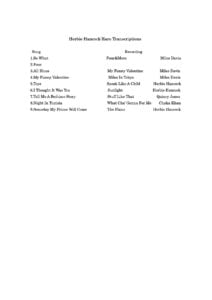 |
Herbie Hancock transcriptions |
| Herbie Hancock Rare Transcriptions book 2 |
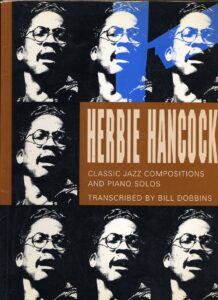 |
Herbie Hancock Rare Transcriptions book 2 |
| Herbie Hancock The Blue Note Years |
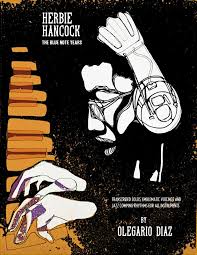 |
Herbie Hancock The Blue Note Years |
| Herbie Hancock The Piano (Solo Piano transcriptions) | Herbie Hancock The Piano | |
| Herbie Hancock Watermelon Man | Herbie Hancock Watermelon Man | |
| Herbie Hancock Watermelon Man Jazz Standard arr. Carsten Gerlitz |
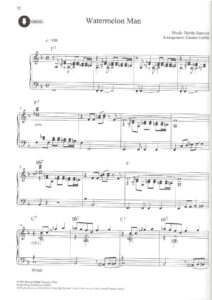 |
|
| Herbie Nichols – The Unpublished Works 27 Jazz Masterpieces |
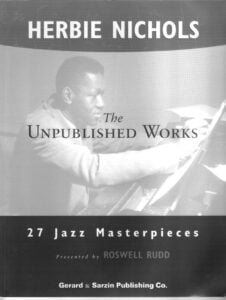 |
Herbie Nichols – The Unpublished Works 27 Jazz Masterpieces |
| Here, there and everywhere (The Beatles) | ||
| Herman Hupfeld As Time Goes By Easy Piano Solo | Herman Hupfeld As Time Goes By Easy Piano Solo | |
| Herman Hupfeld As Time Goes By Original Sheet Piano Vocal Guitar |
 |
|
| Herman Hupfels As Time Goes By Casablanca | Herman Hupfels As Time Goes By – Casablanca | |
| Herman Hupfelt As Time Goes By Piano Sheet Music From Casablanca Piano Vocal | Herman Hupfelt As Time Goes By Piano Sheet Music From Casablanca Piano Vocal | |
| Heroes Del Silencio Guitar Tablatures | Heroes Del Silencio Guitar Tablatures | |
| Heroes del Silencio Para siempre Guitar TAB Songbook |
 |
Héroes del Silencio Para siempre Guitar Songbook |
| Herz – Gammes et Exercises |
 |
|
| Hetzel Gregoire – Claire (From The Film Sage Femme) Piano Solo Partition Sheet Music (Musescore File).mscz | ||
| Hey Jude Sheet Music – The Beatles |
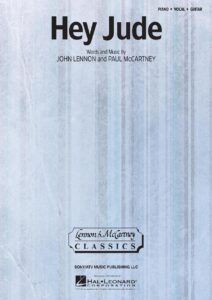 |
|
| Hidetoshi Sato – A Cruel Angel’s Thesis – Neon Genesis Evangelion sheet music | Hidetoshi Sato – A Cruel Angel’s Thesis – Neon Genesis Evangelion sheet music | |
| Hidetoshi Sato 佐藤 英敏 – A Cruel Angel’s Thesis 残酷な天使のテーゼ – Neon Genesis Evangelion 新世紀エヴァンゲリオン Sheet Music 楽譜 (Musescore File).mscz | ||
| High School Musical 2 Sheet Music Complete SongBook |
 |
High School Musical 2 Sheet Music Complete SongBook |
| High School Musical Songbook |
 |
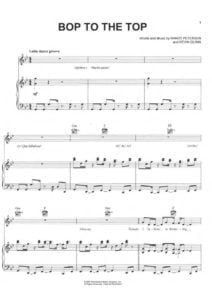 |
| Highland Cathedral by Michael Korb and Ulrich Roever Piano Solo |
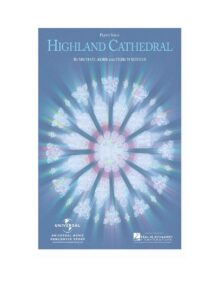 |
|
| Hijo De La Luna – Mecano (Piano Solo) (Musescore File).mscz | ||
| Hijo de la Luna (Mecano) | ||
| Hikaru Utada Hikari Kingdom Hearts |
 |
|
| Hillsong – Shout To The Lord | ||
| Hillsong Worship What A Beautiful Name Piano Solo | Hillsong Worship What A Beautiful Name Piano Solo | |
| Hindemith Flute Sonata (Sonate für Flöte und Klavier) |
 |
|
| Hinder – Lips Of An Angel | ||
| Hip Hop For Piano Solo 10 Inventive Arrangements |
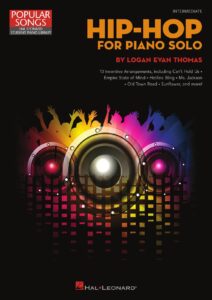 |
|
| Hiro Tanaka – Kid Icarus Theme |
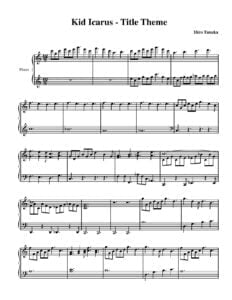 |
|
| Hiroaki Fujiwara – In the wind (Guitar arr. sheet music) |
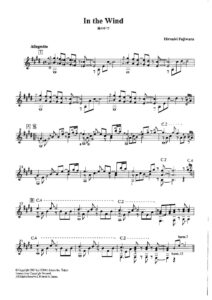 |
|
| Hirokazu Sato Collected Works For Guitar |
 |
Hirokazu Sato Collected Works For Guitar |
| Hirokazu Sato Collected Works For Guitar 2 |
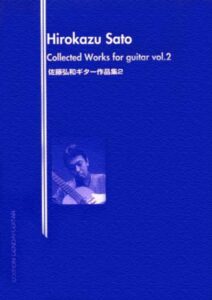 |
Hirokazu Sato Collected Works For Guitar 2 |
| Hiroki Morishita Fire Emblem Fates Lost in Thoughts All Alone Piano Solo | Hiroki Morishita Fire Emblem Fates Lost in Thoughts All Alone Piano Solo | |
| Hiroko Taniyama Ai Wo Komete Umi |
 |
|
| Hiroko Taniyama From Up On Poppy Hill Album Compilation |
 |
|
| Hiroko Taniyama From Up On Poppy Hill Piano Sketch Bonus Tracks |
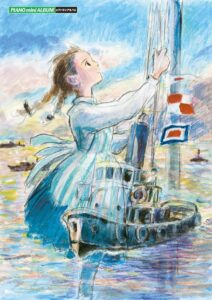 |
|
| Hiroko Taniyama From Up On Poppy Hill The Breakfast Song |
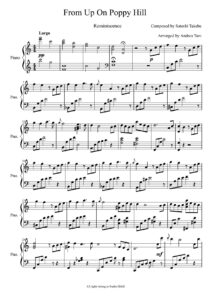 |
|
| Hiroko Taniyama Teru’s Song |
 |
|
| Hiromi Uehara The Tom And Jerry Show (piano Solo Sheet Music) | Hiromi Uehara The Tom And Jerry Show (piano Solo Sheet Music) | |
| Hiromi Uehara – Flashback |
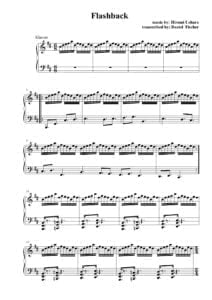 |
|
| Hiromi Uehara – Joy |
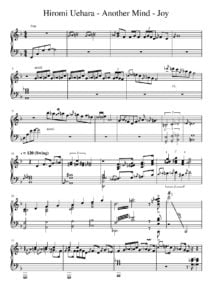 |
|
| Hiromi Uehara Déjà Vu Sheet Music |
 |
|
| Hiromi Uehara First Note from blue giant |
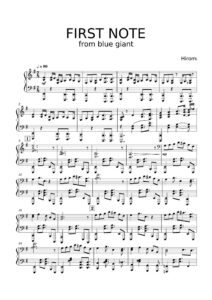 |
|
| Hiromi Uehara Green Tea Farm | Hiromi Uehara Green Tea Farm | |
| Hiromi Uehara Move Transcriptionpdf |
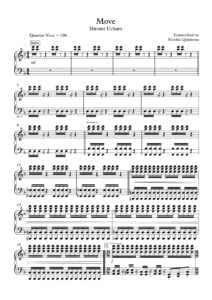 |
|
| Hiromi Uehara Sakura Sakura Transcription |
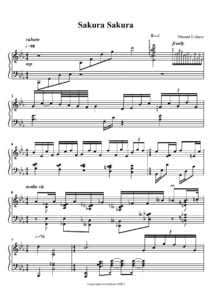 |
|
| Hiromi Uehara Solo Piano Works |
 |
Hiromi uehara solo piano |
| Hiromi Uehara The Tom And Jerry Show |
 |
|
| Hiromi Uehara Transcriptions |
 |
Hiromi Uehara Transcriptions |
| Hiromi Uehara Wake Up And Dream – Sheet Music For Piano Transcription |
 |
|
| Hiromi Uehara Wind Song Sheet Music |
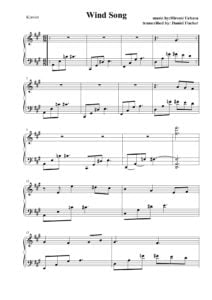 |
|
| Hiromi Uheara – My Way (Comme d’habitude) |
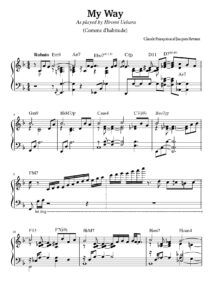 |
|
| Hiroyuki Sawano – Krone Guilty Crown OST Piano solo Sheet music |
 |
|
| Hiroyuki Sawano Attack On Titan 2 Call Of Silence Piano solo |
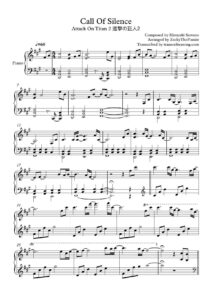 |
|
| Hiroyuki Sawano Attack On Titan Piano Solo Suite arr. OST |
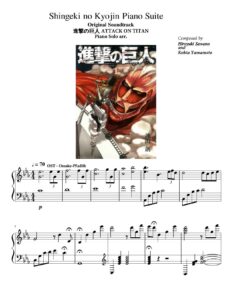 |
|
| Hiroyuki Sawano Attack On Titan Vogel Im Kafig Piano Sheet music |
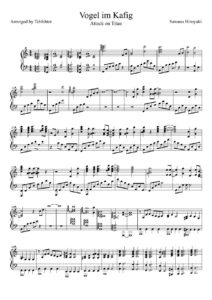 |
|
| Historia De La Música – Homero Raul Vargas Cruz (Español-Spanish) Book |
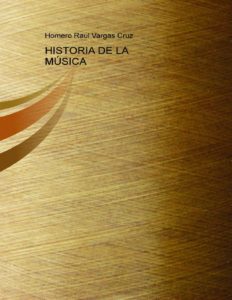 |
|
| Historia de un Amor (Guadalupe Pineda) | ||
| Hit Songs Super Easy Songbook 60 simple arrangements for piano |
 |
Hit Songs Super Easy Songbook 60 simple arrangemnts for piano |
| Hit The Road Jack – Ray Charles Easy Piano.mscz | ||
| Hitchcock’s Music Jack Sullivan (Book) |
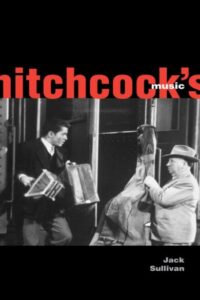 |
|
| Hoagy Carmichael – Georgia On My Mind | ||
| Hoagy Carmichael – Heart and Soul Sheet Music Piano Duet |
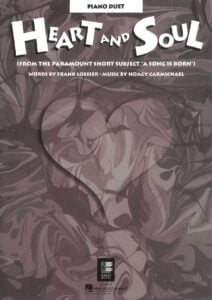 |
|
| Hoagy Carmichael – Star Dust |
 |
|
| Hocuspocus Full Score |
 |
|
| Hoffmanns Erzählungen, J. Offenbach (arr. piano) |
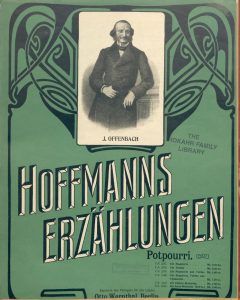 |
|
| Hokage’s Funeral Naruto No Theme – Toshiro Maseda (Anime Sheet Music) (Musescore File).mscz | ||
| Hollybrook – What I Wouldnt Give | ||
| Hollywood Harmony (Musical Wonder and the Sound of Cinema) by Frank Lehman (Book) |
 |
|
| Holst, Gustav – The Planets IV. Jupiter, the Bringer of Jollity, piano solo arr. | Holst, Gustav – The Planets IV. Jupiter, the Bringer of Jollity | |
| Home Alone – Holiday Flight – John Williams | ||
| Home from Wonderland A New Alice A New Musical (Musescore file).mscz | Musescore File | |
| Home Recording For Musicians For Dummies by Jeff Strong (eBook) |
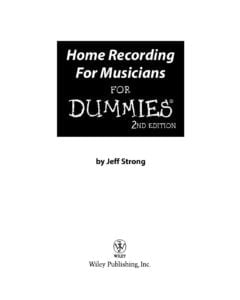 |
|
| Hoobastank – The Reason | ||
| Hook – Flight To Neverland – John Williams | ||
| Hook – I Remember – John Williams | ||
| Hook – The Arrival Of Tink – John Williams | ||
| Hook – The Stories Are True – John Williams | ||
| Hooked on Easy Piano Classics |
 |
Hooked on Easy Piano Classics |
| Horace Silver – Opus de Funk piano solo transcription sheet music |
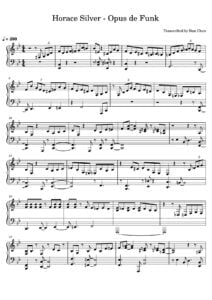 |
|
| Horace Silver Complete Vol 1 The 50s |
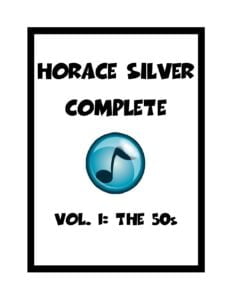 |
Horace Silver Complete Vol 1 The 50s |
| Horace Silver Complete Vol 2 The 60s1 |
 |
Horace Silver Complete Vol 2 The 60s1 |
| Horace Silver Complete Vol 3 The 70s |
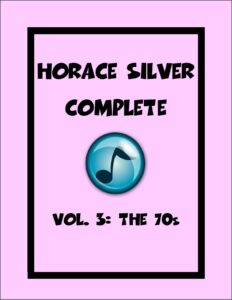 |
Horace Silver Complete Vol 3 The 70s |
| Horace Silver Tribute (jazz sheet music transcriptions) |
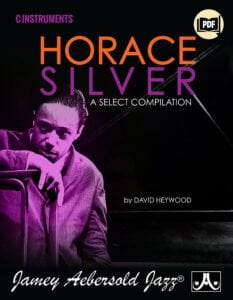 |
Horace Silver Tribute (jazz sheet music transcriptions) |
| Horace Silver Vol 86 – Shoutin Out – Play Along with MP3 audio tracks |
 |
Horace Silver Vol 86 – Shoutin Out – Play Along with MP3 audio tracks |
| Hornby – The Way It Is (Sheet Music) |
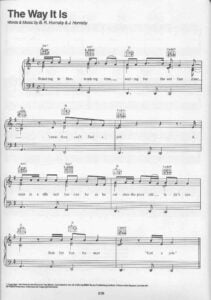 |
|
| Hornby, Nick – Songbook (book) |
 |
|
| Hotel California (Musescore File).mscz | ||
| House Stark Piano Medley (Game Of Thrones) (Musescore file).mscz | Musescore File | |
| How High The Moon – Joe Pass (Musescore File).mscz | ||
| How Jazz Pianists practice by Ted Rosenthal | How Jazz Pianists practice by Ted Rosenthal | |
| How My Heart Sings – As Played By Bill Evans (Musescore File).mscz | ||
| How To Listen To Jazz – Ted Gioia (Book) |
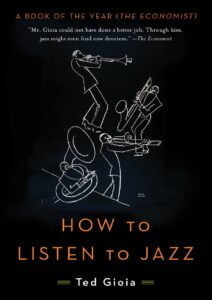 |
|
| How To Play Bebop Vol 1 David Baker for all instruments |
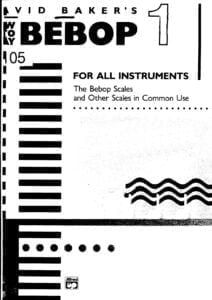 |
|
| How To Play Bebop Vol 1 to 3 David Baker – (Italiano – Italian) |
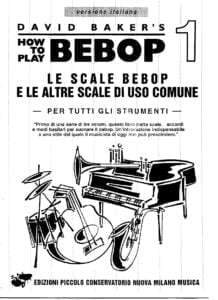 |
|
| How To Play Bebop Vol 2 David Baker |
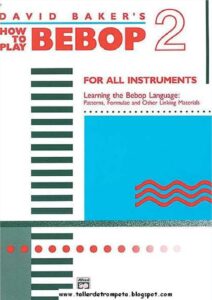 |
|
| How To Play Bebop Vol 3 David Baker for all instruments |
 |
|
| How To Play Blues & Boogie Piano Styles |
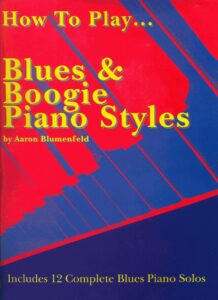 |
|
| How To Play Blues Piano By Ear (pdf + MP3 tracks) – Todd Lowry |
 |
How to play blues by ear |
| How To Play Blues Piano Junior Mance |
 |
How.To.Play.Blues.Piano.-.Junior.Mance.1967 |
| How To Play Boogie Woogie 14 Boogie Woogie Solos For Piano With Tips |
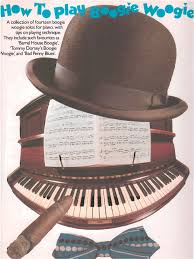 |
How To Play Boogie Woogie 14 Boogie Woogie Solos For Piano With Tips |
| How to Play Boogie Woogie Piano [PDF+ with audio MP3] – Arthur Migliazza and Dave Rubin |
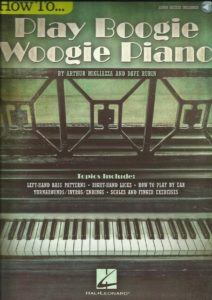 |
How to Play Boogie Woogie Piano |
| How To Play Folk Guitar By Jerry Silverman |
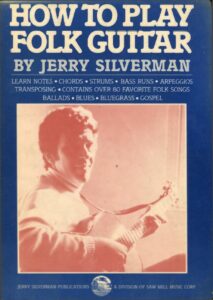 |
How To Play Folk Guitar By Jerry Silverman |
| How To Play Guitar with TABs Learn Guitar without reading standard notation by Matthew Christey |
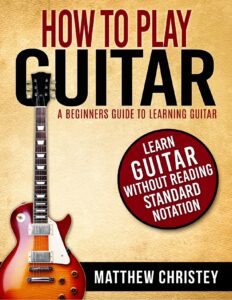 |
|
| How To Play Hard Rock & Heavy Metal Guitar with Tablature |
 |
How To Play Hard Rock & Heavy Metal Guitar |
| How To Play Piano (Course Workbook) |
 |
|
| How to Play Popular Piano in 10 Easy Lessons The Fastest, Easiest Way to Learn to Play from Sheet Music or by Ear (Norman Monath) |
 |
|
| How To Play Ragtime Guitar by Stefan Grossman and Ton Van Bergeyk with Tablaturewith Tablature |
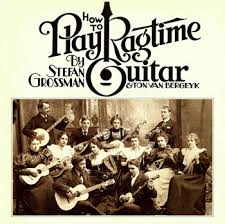 |
How To Play Ragtime Guitar – Finger Picking Stefan.Grossman.&.Ton.Van.Bergeyk |
| How To Play Reggae Guitar by Ray Hitchins |
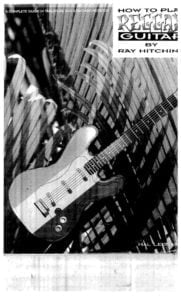 |
|
| How To Play The Piano (By Mark Hambourg) (1922) | How To Play The Piano | |
| How To Practise On The Piano – Reflections And Suggestions (By Heinrich Ehrlich) (1901) |
 |
|
| How To Really Play The Piano The Stuff Your Teacher Never Taught You (Bill Hilton) Book |
 |
How To Really Play The Piano The Stuff Your Teacher Never Taught You (Bill Hilton) Book |
| How to Speed Read Piano Chord Symbols |
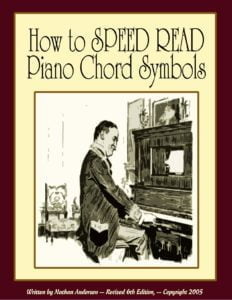 |
|
| How To Train Your Dragon (1 and 2) Music From The OST Piano Solo |
 |
How To Train Your Dragon (1 and 2) Music From The OST Piano Solo |
| How You Like That Blackpink (Musescore File).mscz | ||
| Howard Goodall Shackletons Cross |
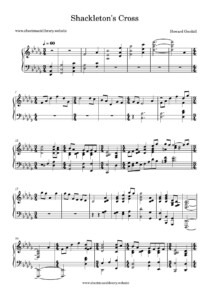 |
|
| Howard Richman – Super Sight Reading Secrets (Guitar – METHOD) | Howard Richman – Super Sight Reading Secrets | |
| Howard Roberts Garry Hagberg The Praxis System Guitar Compendium Vol 1 |
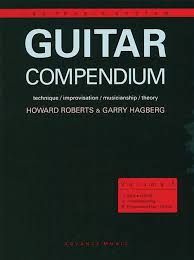 |
|
| Howard Roberts Guitar Book By Howard Roberts And James Stewart |
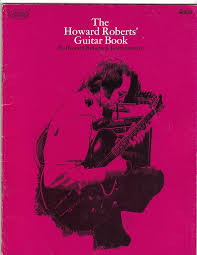 |
|
| Howard Roberts Guitar Manual Chord Melody |
 |
|
| Howard Roberts Guitar Manual Sight Reading |
 |
|
| Howard Shore Beyond The Forest The Hobbit The Desolation Of Smaug |
 |
|
| Howard Shore Dwarf Song From The Hobbit. An Unexpected Journey |
 |
|
| Howard Shore Jacob Black Theme From The Twilight Saga Eclipse Piano solo |
 |
|
| Howard Shore Jacobs Theme From The Twilight Saga Eclipse Piano solo |
 |
|
| Howard Shore The Lord Of The Rings Sheet Music Collection | Howard Shore The Lord Of The Rings Sheet Music Collection | |
| Howard Shore – The Lord Of The Rings The Two Towers Piano Vocal Chords |
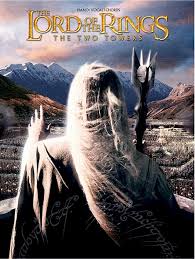 |
Howard Shore – The Lord Of The Rings The Two Towers Piano Vocal Chords |
| Howard Shore Lord Of The Rings – In Dreams (The Breaking of the Fellowship) | In dreams. | |
| Howard Shore Lord Of The Rings Medley Jarrod Radnich Virtuosic Piano Solo Sheet | Howard Shore Lord Of The Rings Jarrod Radnich Virtuosic Piano Solo Sheet | |
| Howard Shore Lord Of The Rings The Fellowship of the Ring (easy piano vocal chords) |
 |
Lord Of The Rings The Fellowship of the Ring (piano-vocal-chords) |
| Howard Shore Lord Of The Rings The Fellowship Of The Ring Complete Transcription For Piano | Howard Shore Lord Of The Rings The Fellowship Of The Ring Complete Transcription For Piano | |
| Howard Shore Neil Finn The Hobbit song of the lonely mountain (An Unexpected journey) | The Hobbit song of the lonely mountain | |
| Howard Shore Rohan From The Lord Of The Rings |
 |
|
| Howard Shore Silence Of The Lambs Main Theme | Howard Shore Silence Of The Lambs Main Theme | |
| Howard Shore The Hobbit An Unexpected Journey Piano Vocal |
 |
Howard Shore The Hobbit An Unexpected Journey Contents List |
| Howard Shore The Hobbit My dear Frodo The Hobbit An Unexpected Journey | Paul Decker The Hobbit My dear frodo | |
| Howard Shore The Lord Of The Rings |
 |
|
| Howard Shore The Lord Of The Rings The Return Of The King Howard Shore Viggo Mortensen |
 |
|
| Howard Shore The Lord of the Rings The Return of the King Minas Tirith | Lord of the Rings – The Return of the King.PDF | |
| Howard Shore The Lord Of The Rings The Return Of The King piano vocal guitar chords |
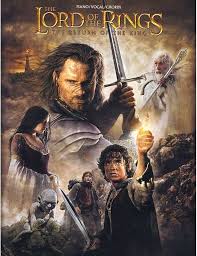 |
Howard Shore The Lord Of The Rings The Return Of The King piano vocal guitar chords Contents |
| Howard Shore The Lord Of The Rings Complete Score for piano and voice |
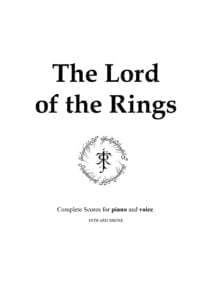 |
The Lord Of The Rings Complete Score Howard Shore |
| Howard Shore The Lord Of The Rings Complete Trilogy (Piano Vocal Guitar Chords) |
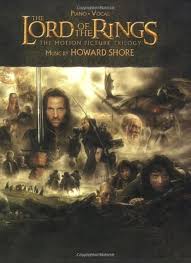 |
Howard Shore – The Lord Of The Rings Complete Trilogy — Howard Shore The Lord Of The Rings Complete Trilogy (Piano Vocal Chords) CONTENTS  |
| Howl’s Moving Castle – Promise Of The World (Musescore File).mscz | ||
| Howl’s Moving Castle (Musescore File).mscz |
